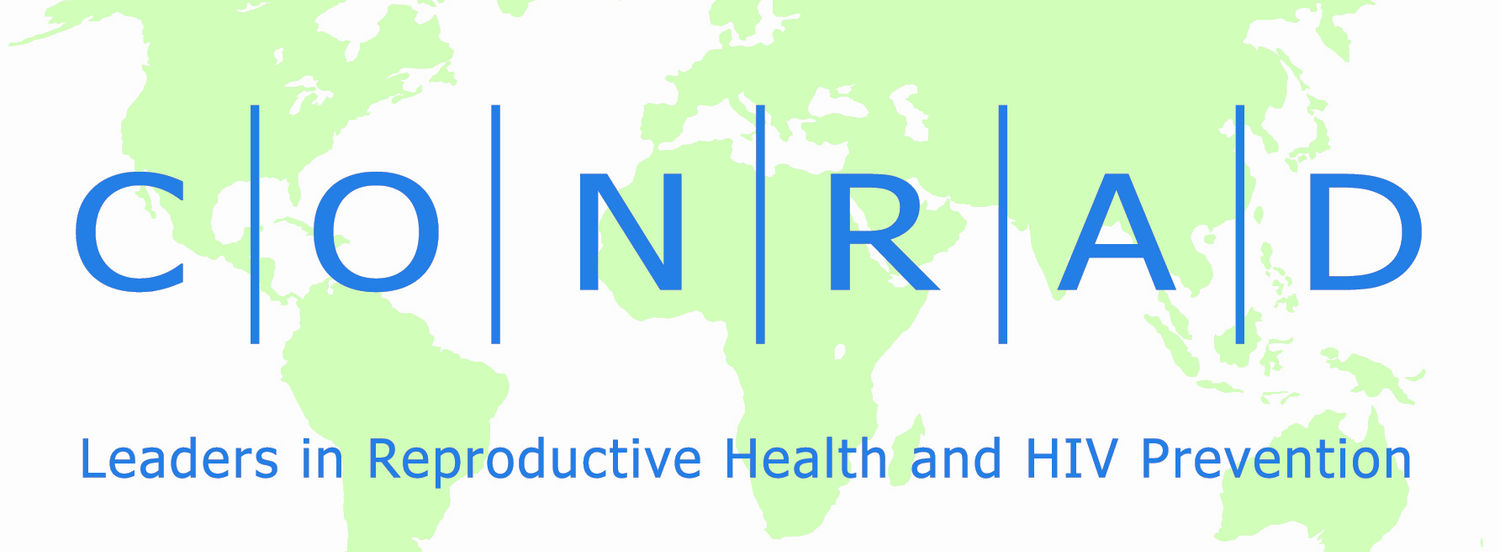预约演示
更新于:2025-05-07
RT x PR
更新于:2025-05-07
关联
2
项与 RT x PR 相关的药物靶点 |
作用机制 PR拮抗剂 [+1] |
在研适应症 |
非在研适应症- |
最高研发阶段临床1/2期 |
首次获批国家/地区- |
首次获批日期1800-01-20 |
靶点 |
作用机制 PR激动剂 [+1] |
在研机构- |
在研适应症- |
最高研发阶段无进展 |
首次获批国家/地区- |
首次获批日期1800-01-20 |
5
项与 RT x PR 相关的临床试验NCT05041699
A Randomized, Double-Blind, Phase 1b Study in Healthy HIV-Negative Women to Evaluate the Pharmacokinetics, Safety, and Bleeding Patterns Associated With 90-Day Use of Core-Sheath Vaginal Rings Releasing Dapivirine and Levonorgestrel
A double-blind, randomized trial (1:1) to characterize the local and systemic pharmacokinetics (PK) of two DPV-LNG vaginal ring formulations
开始日期2022-06-20 |
申办/合作机构 |
NCT03762382
Phase IIa, 90-Day Safety, Adherence, and Acceptability Study of Intravaginal Rings Releasing Tenofovir With and Without Levonorgestrel Among Women in Western Kenya
The purpose of the study is to evaluate the safety, pharmacokinetics and pharmacodynamics of, and the tolerability and acceptance of an intravaginal ring (IVR) delivering both tenofovir and levonorgestrel (TFV/LNG) and an IVR delivering TFV only, compared to a placebo IVR, in women in Western Kenya.
开始日期2018-12-12 |
申办/合作机构 |
100 项与 RT x PR 相关的临床结果
登录后查看更多信息
100 项与 RT x PR 相关的转化医学
登录后查看更多信息
0 项与 RT x PR 相关的专利(医药)
登录后查看更多信息
437
项与 RT x PR 相关的文献(医药)2025-04-15·Journal of Virology
A virus-like particle assembly system for probing the HIV-1 Gag–Pol dimerization domain: supporting evidence for reverse transcriptase involvement in protease activation by influencing Gag–Pol/Gag–Pol interaction
Article
作者: Wang, Chin-Tien ; Hsieh, Shih-Han ; Huang, Kuo-Jung
2025-04-02·Journal of Antimicrobial Chemotherapy
Defective HIV-1 DNA pol sequences are not associated with HIV-1 DNA levels and drive most APOBEC-context drug resistance mutations
Article
作者: Alidjinou, Enagnon Kazali ; Diarra, Ava ; Derdour, Vincent ; Bocket, Laurence ; Robineau, Olivier ; Meybeck, Agnès ; Bazus, Hélène ; Hober, Didier ; Guigon, Aurélie ; Aissi, Emmanuelle ; Tetart, Macha ; Viget, Nathalie ; Coulon, Pauline
2024-11-01·Infection, Genetics and Evolution
High HIV-1 genetic diversity and low prevalence of transmitted drug resistance among treatment-naive people living with HIV in Madagascar
Article
作者: Rakoto, Danielle Aurore Doll ; Maharavo, Luca ; Randriarimanana, Santatriniaina Hajanirina Dauphin ; Peeters, Martine ; Serrano, Laetitia ; Delaporte, Eric ; Fernandez-Nuñez, Nicolas ; Rakotomalala, Fetra Angelot ; Rasamoelina, Tahinamandranto ; Babin, François-Xavier ; Rabetokotany, Felana Ranaivo ; Randriamananjara, Hajanirina Nathanaella ; Nerrienet, Eric ; Samison, Luc Hervé ; Butel, Christelle ; Ayouba, Ahidjo ; Vidal, Nicole
2
项与 RT x PR 相关的新闻(医药)2024-11-17
近年来,领域内一直在探索体内基因编辑药物的有效递送方式,VLP(Virus-like Particle,病毒样颗粒)作为一种新型递送平台,兼具病毒载体和非病毒载体的优势,在基因编辑药物递送中展现了广泛的潜力。在本系列的文章中,我们将和大家分享VLP递送mRNA和RNP相关技术和专利方面的一些感悟。
新型递送系统VLP的专利策略 - 序
by
TiPLab初
随着CRISPR系统在体内编辑的广泛验证,如何有效递送使体内编辑类药物更好的发挥药物活性成为了领域内关注的热点。以CRISPR/Cas系统为例,目前相对成熟的递送方式主要以病毒递送载体AAV和非病毒递送载体LNP为主,但由于各自固有的局限性,也驱动着领域内玩家持续探索新型递送方式。
这其中,围绕VLP(Virus-like Particle,病毒样颗粒)的研究进展,显示了其在体内编辑药物递送方面的潜力。以张锋和David Liu等为代表的基因编辑领先研究团队相继报道,VLP能够通过mRNA或RNP(ribonucleoprotein,核糖核蛋白)的形式,有效递送CRISPR/Cas、碱基编辑器BE和先导编辑器PE;国内本导基因基于自研的VLP-mRNA平台,开发了CRISPR抗病毒基因编辑药物BD111,目前已推进到临床I期。
这些研究结果表明VLP兼具病毒载体和非病毒载体的优势,既能有广泛的靶向性,同时又能在体内瞬时递送mRNA、蛋白质或RNP。
VLP是由病毒结构蛋白组装形成的颗粒结构,只保留了病毒的骨架,不包含基因组核酸,目前研究比较多的VLP是基于逆转录病毒载体和慢病毒载体衍生而来的。
以逆转录病毒为例,病毒颗粒内部包裹两端存在LTR序列的RNA,这些RNA编码各种结构形成病毒骨架的结构蛋白Gag(包含MA、CA、和NC蛋白)、Pol(包含IN、RT和PR蛋白)、Env和其他调节蛋白,5’-LTR序列具有调控gag/pol/env的表达、启动逆转录和整合基因组的功能,并且其下游存在病毒包装基因组RNA所必须的ψ信号。
图1 逆转录病毒颗粒及其衍生的病毒载体和VLP(改编自doi: org/10.13070/mm.en.3.174)
传统的逆转录病毒载体,将LTR中间的片段替换为目标基因,利用结构蛋白Gag和Pol形成的衣壳将目标基因包装到病毒颗粒内、随后通过包膜Env介导的受体结合、内吞作用将目标基因递送到细胞内;并且能够在5’-LTR的辅助下利用结构蛋白Pol编码的整合酶将目标基因整合进入靶细胞的基因组中。
VLP则是在此基础上进行删减,只保留负责组装成病毒包膜和衣壳的Gag-Pol蛋白,去除LTR和其他调控蛋白。因此VLP既有成熟的慢病毒载体和逆转录病毒载体的包装和靶向特性、瞬时表达编辑酶的能力,同时也避免了外源基因整合靶细胞基因组的可能性。
由于没有5’-LTR下游片段的包装信号ψ,VLP如何能够在衣壳组装过程中将mRNA、蛋白或RNP包装到壳内,是实现VLP高效递送的关键问题之一。
图2 VLP递送mRNA和RNP(doi: 10.1016/j.cell.2022.03.045)
通过对该领域的研究与调查,我们发现,针对这一技术问题领域内在持续不断地产生新的解决方案。对于后续想要进入该赛道的玩家,围绕VLP的包装问题,伴随技术发明所产生的专利策略,对后续技术的专利布局有什么借鉴的地方吗?对于想要在现有基础上进行改进的玩家,有哪些潜在的专利风险需要注意?在本系列的文章中,我们将围绕VLP递送mRNA和RNP 2种体系的包装问题,与大家分享我们在技术发展和专利策略中的相关研究。
* 以上文字仅为促进讨论与交流,不构成法律意见或咨询建议。
© 作为一家专业服务公司,TiPLab坚持原创的系统的研究,注重系统性知识积累与专业影响力。欢迎读者个人分享转发,各专业平台媒体如需转载请联系TiPLab获得授权。
TiPLab提供基于研究的核心知识产权服务
FTO:技术商业化实施的侵权风险防范
TiPLab通过对细分技术领域内核心技术和重要专利的长期研究,结合自身在数据检索和分析方面的专长,致力于帮助客户深入了解、积极应对潜在的专利侵权风险。
Due Diligence:商业活动中的知识产权尽职调查
在企业许可交易、融资、并购、上市等过程中,TiPLab帮助企业和投资方了解目标技术/产品的专利保护强度及产品商业化过程中潜在的专利侵权风险,从而为商业谈判和决策提供支持依据。
Strategic Patenting:全球范围内高价值专利资产的创设
TiPLab熟知全球主要国家和地区的法律实践和细分领域内的前沿技术进展情况,通过前瞻性的专利布局策略,帮助客户通过创设有价值的专利资产而获取、保持和巩固独特的竞争优势。
信使RNA基因疗法核酸药物
2022-12-03
·药时代
肝病新药联盟重磅直播!【年度回顾】大话NASH新药研发!——2022年的进展和希望!| 肝病新药联盟直播第1期探讨生物制药与高端复杂制剂创新包装和给药装置!生物制药与高端复杂制剂创新包装和给药装置线上论坛 | 药时代直播间第126期重磅直播!聚焦两大火热的赛道!当ADC遇见爱(AI),这个火热的新药赛道将大放异彩!| 晶泰科技·药时代直播间第3期药时代创新药BD高阶研讨会火热报名中!药时代投融资高阶研讨会火热报名中!美国血液学会成立于1958年,是全球最大的血液疾病领域的专业学会,拥有来自近100个国家的18,000多名成员,为世界各地致力于征服血液疾病的临床医生和科学家提供服务。2022年年会将于2022年12月10-13日在美国新奥尔良线上及线下联合举办,其中,多项国产新药数据将于本次年会上发布。现将会议即将发布的国产新药最新动态整理如下:部分新药信息汇总一、小分子药物1、百济神州:泽布替尼作用机制:BTK抑制剂适应症:MCL、DLBCL、MZL等泽布替尼是百济神州开发的BTK抑制剂,最早于2019年获FDA批准用于套细胞淋巴瘤,2020年6年获NMPA批准用于既往至少接受过一种治疗的成人套细胞淋巴瘤(MCL)患者和既往至少接受过一种治疗的成人慢性淋巴细胞白血病(CLL)/小淋巴细胞淋巴瘤(SLL)患者。公司将在第63届美国血液学会(ASH)年会及其展会上公布血液肿瘤研究项目的临床结果和真实世界数据,其中包括两份关于临床3期SEQUOIA试验的口头报告,该试验对比了百悦泽(泽布替尼)与苯达莫司汀联合利妥昔单抗(B + R),用于治疗初治(TN)慢性淋巴细胞白血病(CLL)或小淋巴细胞淋巴瘤(SLL)患者的数据。在中期分析中,SEQUOIA随机队列1的数据达到主要终点,与B + R方案相比,百悦泽®在无进展生存期(PFS)方面取得了具有高统计学显著性的改善。独立审查委员会(IRC)和研究者评估取得的疗效结果一致,风险比率(HR)均为0.42,且在不同特征的患者中均观察到该结果。在基于IRC和研究者的评估得出的总缓解率(ORR)方面,数据也显示了更好的疗效。2、百济神州:Bgb-11417作用机制:Bcl-2抑制剂适应症:CLL/SLL、NHL、WM、MM等BGB-11417是一种高度选择性的Bcl-2抑制剂,其效力是venetoclax的10倍以上,Bcl-2和Bruton酪氨酸激酶(BTK)抑制剂的组合在慢性淋巴细胞白血病(CLL)和套细胞淋巴瘤(MCL)中具有协同活性。在2022 ASH上,公司公布了一项人类1/1b期剂量递增/扩大研究,截至2022年5月15日,50例CLL患者接受了治疗,其中6例单药治疗(均为复发/难治性)和44例联合治疗(22例R/R;22例初治TN)。单药治疗的中位随访时间为11.5个月(8.5-18.3),联合治疗为5.8个月(0.2-10.5)。研究显示:大多数CLL/SLL患者的绝对淋巴细胞计数(ALC)显著降低,最低接受1mg剂量时出现响应,这与BGB-11417与venetoclax相比的效力提高一致。单药治疗和联合治疗分别观察到4例应答(66%)和32例应答(72.7%)。在4名160 mg剂量组的MRD可评估患者中,3名患者在BGB-11417治疗24周后外周血CLL计数<10-4。单药治疗中,细胞减少是最常见的TEAE(≥50%)。联合用药组中,挫伤、中性粒细胞减少和低度胃肠道毒性是最常见的TEAE(≥22.7%)。单药组没有患者停止治疗,1例联合治疗组患者停止治疗。此外,在另一项正在进行的1/1b期剂量递增/扩大研究中,截至2022年5月15日,45例NHL、WM或MCL患者接受了BGB-11417(34例单药治疗;11例联合治疗)。单药治疗患者(NHL n=28;WM n=6 )接受BGB-11417,剂量≤640毫克。联合治疗患者(n=11 MCL)接受了也接受了BGB-11417剂量≤160 mg。研究显示:随着NHL单药治疗剂量增加至640 mg;所有治疗组均未达到MTD。单药治疗的中位随访时间为6.5个月(范围为0.4-25.3),联合治疗为4.8个月(0.4-8.9)。单药治疗组最常见的TEAE(≥20%)为恶心(38%)、疲劳(24%)、便秘、腹泻和头晕(各21%);最常见的≥3级TEAE为中性粒细胞减少症(12%)。联合治疗组最常见的TEAE是挫伤和中性粒细胞减少。25名单药治疗患者(22名疾病进展;1名AE;2名其他原因)和2名联合治疗患者(PD)停止治疗。到目前为止,没有导致死亡的TEAE和TLS报告。3、亚盛:HQP1351作用机制:BCR-ABL抑制剂适应症:CMLHQP1351(奥雷巴替尼)为第三代BCR-ABL抑制剂,对CML 和Ph+ ALL 具有抗肿瘤活性,且耐受性良好。在一项多中心、开放标签、随机对照的临床研究首次报告了奥雷巴替尼在中国以外的CML和Ph+ ALL患者中的安全性、有效性和药代动力学(PK)特征。研究共纳入30例患者入组,其中包括CML-CP患者23例,CML-AP患者4例,CML急变期(-BP)患者2例,Ph+ ALL 患者1例。他们的中位(范围)治疗持续时间为4.8(0.03-21.29)个月,从诊断为CML或Ph+ ALL到开始使用奥雷巴替尼治疗的中位(范围)时间为7.0(1.5-24.0)年。结果显示:奥雷巴替尼在CML和Ph+ ALL患者中具有强效的抗白血病活性。在21例疗效可评估的患者中,10/17例(58.8%)获得完全细胞遗传学反应(CCyR);9/21(42.9%)的患者获得主要分子反应(MMR)。奥雷巴替尼对T315I突变的患者(62.5%,CCyR;50%, MMR)和不伴有T315I突变的患者(55.6%,CCyR;38.5%,MMR)有效,其有效性并未因先前使用过ponatinib或asciminib而受到影响。对ponatinib耐药的患者中有5/9例(55.6%)获得CCyR,6/11例(54.5%)获得了MMR。使用过asciminib的5例患者中有4 例获得缓解。PK分析表明,奥雷巴替尼的血浆暴露量从30到50mg QOD呈剂量比例增加,说明中国和美国CML患者群体的血浆暴露量相当。在HQP1351-CC-201研究中,100%的CML-CP患者获得完全血液学反(CHR)(31/31,其他10名患者在基线时即为CHR),34/41(82.9%)获得主要细胞遗传学反应(MCyR),29/41 (70.7%)获得CCyR,24/41 (58.5%)获得MMR。获得CHR的中位时间为1个月(95% CI:1.0-1.9),获得MCyR的中位时间为2.8个月(95% CI:2.8-5.6),获得MMR的中位时间为6.5个月(95%
CI:2.8至未达到[NR])。36个月时的无进展生存率(PFS)为86.3%(95% CI:70.2%-94.1%),总生存率(OS)为95.1%(95% CI:81.9%-98.8%)。在HQP1351-CC-202研究中,共有18(78.3%)例患者获得主要血液学反应(MaHR)(73.9% CHR和4.4%无白血病证据[NEL]);12(52.2%)例患者获得MCyR;12(52.2%)例患者获得CCyR;11(47.8%)例患者获得MMR。获得MaHR的中位时间为2.8个月(95% CI:1.0-4.7);获得MCyR的中位时间为5.6个月(95% CI:2.00-NR);获得MMR的中位时间为13.1个月(95%
CI:5.6-22.4)。36个月时,PFS率为57.1%(95% CI:33.3%-75.1%),OS率为69.6%(95% CI:46.6%-84.2%)。6例患者因PD退出,4例患者不耐受, 1例患者有其他原因,2例患者死亡。4、亚盛:APG-2575作用机制:Bcl-2抑制剂适应症:CLL/SLLAPG-2575是一种特异性Bcl-2抑制剂,在R/R CLL/SLL患者中具有活性,包括经BTKs治疗后伴有del(17p)和疾病进展(PD)的患者。这是APG-2575联合acalabrutinib或利妥昔单抗用于R/R CLL/SLL患者的数据首次报告。患者每天单独口服APG-2575(400mg,600mg和800mg)或与acalabrutinib/利妥昔单抗联用6个周期,每28天为一周期。研究主要目的为确定II期研究推荐剂量(RP2D)、安全性和有效性,包括APG-2575单药及联合acalabrutinib或利妥昔单抗的ORR。在监测肿瘤溶解综合征(TLS)前提下,患者采用每天梯度递增给药的方式,4-6天后可达到最终目标剂量:第1天(D1)20mg,D2 50mg,D3 100mg,D4
200mg,D5 400mg。随后第1周期(C1)APG-2575 D1的目标剂量为400、600或800mg。联合治疗组中的患者在完成梯度递增给药达到目标剂量后,继续接受额外7天的APG-2575先导治疗,然后在C1D8时加入acalabrutinib/利妥昔单抗,直至观察到PD或者不可耐受的毒性。截止2022年7月4日,共入组141例患者。中位年龄62岁(18-80)。研究显示:56%的患者在每天梯度递增给药结束后,淋巴细胞迅速恢复至正常水平。单药组中,患者的ORR达65%(43例);acalabrutinib联合组中,患者的ORR达98%(53例),利妥昔单抗联合组中,患者的ORR达87%(23例)。常见的(>5%)任何级别的不良反应(AE)包括:粒细胞减少(30%,3/4级为26%),新冠病毒感染(26%),贫血(24%,3/4级为12%),腹泻(20%),血小板减少(17%,3/4级为5%),高尿酸血症或发热(各9%),恶心、头痛或疲劳(各占8%),谷草转氨酶(AST)水平升高(7%),高磷血症(6%);肌酐升高(6%)。5、德琪:ATG-010作用机制:XPO1蛋白抑制剂适应症:R/R NK/TATG-010(selinexor)是一种exportin 1(XPO1)蛋白抑制剂,与GemOx方案联合使用时,在Ib期TOUCH研究中已证明对中国R/RT和NK细胞淋巴瘤患者(pts)的初步疗效。本次ASH年会上,德琪医药更新了该临床试验数据,该研究从2020年8月18日至2022年6月10日开始入组39名患者(GemOx组35名,ICE组4名),并接受了至少一剂研究治疗。研究中位年龄为55岁(25-78岁);29例(82.9%)患者患有III/IV期疾病。显示:在35名可评估疗效的GemOx患者中,ORR为48.6%(17/35);CR率为22.9%(8/35)。PTCL-NOS、ENKTL、AITL、ALCL患者的ORR分别为53.3%(8/15)、60%(6/10)、22.2%(2/9)和100%(1/1);CR率分别为26.7%、20%、11.1%和100%。有(50%,10/20)和无(46.7%,7/15)吉西他滨暴露史的患者的ORR相似。与未接受西达本胺的患者(33.3%,5/15)相比,接受过西达本胺的患者(60%,12/20)的ORR更高;与未接受抗PD1/PD-L1的患者(37.5%,9/24)相比,接受抗PD1/PD-L1治疗的患者(72.7%,8/11)的ORR更高。在中位随访13.0个月时,35名GemOx患者的中位PFS、DOR和OS分别为2.9(95%CI 1.5-4.7)、3.3(95%CI 1.6-8.1)个月和未达到(95%CI 11.5-NE)。PTCL-NOS和ENKTL患者的中位PFS分别为4.4(95%CI 1.5-9.6)和4.7(95%CI 1.2-NE)个月。PTCL-NOS、ENKTL和AITL的中位OS分别未达到(95%CI 5.6-NE)、14.1个月(95%CI 8.3-NE)和未达到(95%CI 2.2-NE)。二、抗体药物1、君实:Tifcemalimab作用机制:BCLA单抗适应症:R/R淋巴瘤Tifcemalimab(也称为icatolimab、JS004或TAB004)是一种具有铰链突变(S228P)的人源化IgG4单克隆抗体,能够特异性结合BTLA并阻断其与配体的相互作用。BTLA是一种在B、T和NK细胞上表达的抑制性受体。在来自癌症患者的外周血单核细胞(PBMC)中进行的实验显示,与单独阻断两种途径相比,联合阻断BTLA和PD-1途径改善了抗原特异性T细胞反应。根据君实生物在本次ASH年会中报告了Tifcemalimab单药或联合PD-1单抗治疗复发/难治性淋巴瘤患者的初步安全性和抗肿瘤活性。显示在接受单药治疗的22名可评估患者中,观察到1名PR(滤泡性淋巴瘤)和7名SD。在接受联合方案(n=12)的所有可评估霍奇金淋巴瘤患者中,观察到1例CR、4例PR(ORR 41.7%)和5例SD(DCR 83.3%)。其中,11例(91.7%)和7例(58.3%)患者分别对先前的抗PD-1/L1或抗CD30治疗无效。截止2022年7月21日,所有响应仍在持续,反应持续时间为2个月以上至8个月以上。2、信达:IBI188作用机制:CD47单抗适应症:MDSIBI188是一种针对CD47的重组全人IgG4单克隆抗体,CD47是一种存在于癌细胞上的抗吞噬细胞信号。IBI188阻断了这一先天免疫检查点,增强了肿瘤细胞的吞噬作用。大会报告评估了IBI188联合AZA作为新诊断的高危骨髓增生异常综合征(MDS)受试者的一线治疗的安全性和有效性。对未经治疗的中危至极危(IPSS-R>3.5)MDS患者给予IBI188联合AZA治疗。IBI188剂量递增方案为0.1-30 mg/kg QW。AZA在第1-7天给药75mg/m2,Q4W。研究显示,中位随访时间9.2个月,对于45名随访期超过6个月的可评估患者,37/45(82.2%)患者有客观响应,14(31.1%)患者达到CR,16(35.6%)患者达到骨髓CR,7(15.6%)患者仅出现血液学改善。反应的中位持续时间为12.0个月(95%CI,6.5-NC)。最常见的AE(≥30%)分别为血小板计数下降(49.5%)、贫血(44.1%)、血胆红素升高(36.6%)、中性粒细胞计数下降(36.6%%)、白细胞计数降低(36.4%)和溶血(34.4%)。9名患者(9.7%)因相关AE而停止治疗。3、天广实生物:MIL62作用机制:CD20单抗适应症:B-NHLMIL62是具有独特市场竞争地位的新一代CD20抗体,通过天广实生物的ADCC增强抗体平台自主研发,是中国首款及目前唯一进入III期注册临床试验阶段的由国内药企开发的第三代抗CD20抗体。与与第一代抗CD20抗体利妥昔单抗相比,MIL62的独特结合表位及抗体糖基化修饰显示出更强的ADCC活性和抗肿瘤活性。在一项 I/IIa 期剂量递增和剂量扩展研究 中,评估了 MIL62 联合ICP-022治疗复发/难治性 (r/r) B 细胞非霍奇金淋巴瘤
(B-NHL) 患者的有效性,结果显示,截止2022年7月15日,中位OS随访时间为13.0(95%置信区间[95%CI]:12.2,15.0)个月。总体而言,42名可评估患者中有27名(64.3%)有客观反应,其中13名(31%)患有CR,14名(33.3%)患有PR。此外,在30例可评估的DLBCL患者中,17例(56.7%)患者有客观缓解,其中CR患者7例(23.3%),PR患者10例(33.3%)。中位无进展生存期(PFS)、9个月缓解率和12个月总生存率分别为5.8个月([95%CI]:3.9,未达到)、71.4%、73.0%。在20例利妥昔单抗耐药患者中,10例(50%)患者有客观缓解,中位PFS为5.6个月。在43例安全性评估患者中,治疗紧急不良事件(TEAEs)和治疗相关不良事件(TRAEs)分别发生在39例(90.7%)和38例(88.4%)患者中。3级及以上TEAE20例(46.5%),其中TRAE16例(37.2%),伴有中性粒细胞减少(20.9%)、血小板减少(16.3%)。严重不良事件(SAEs)发生在14例(32.6%)患者中,其中11例(25.6%)为TRAEs。4名(9.3%)患者因TEAEs而永久停止研究。MIL62输注相关反应发生率为11.6%,均为1-2级。三、细胞治疗药物1、科济药业:CT053作用机制:BCMA CAR-T适应症:R/R MMCT053是科济药业研发的BCMA CAR-T疗法,公司在ASH年会上公布了国内LUMMICAR-1注册临床数据。研究在2020年12月1日至2022年3月2日,共有102名符合条件的患者接受了Zevor cel治疗,年龄中位数为59.5岁(38至75岁),既往治疗中位数为4(3至15岁),其中24例(23.5%)患者接受过自体ASCT,91例(89.2%)患者为双重难治性,23例(22.5%)患者为三重难治性。39例(38.2%)患者筛查时患有III期疾病,7例(6.9%)患者患有髓外疾病(EMD),46例(45.1%)患者患有高危细胞遗传学异常。研究显示:在83例患者中,平均随访227(11-437)天,IRC评估的ORR为92.8%(95%CI,84.9-97.3),CR/sCR为42.2%(95%CI,31.4-53.5),VGPR及以上为81.9%(95%C,I72.0-89.5)。未达到mPFS,6个月PFS率为90.2%(95%CI,80.4-95.2)。未达到mDOR,6个月时有响应的患者仍有92.2%(95%CI,80.1-97.1)保持响应。对达到VGPR及更好的患者进行MRD状态评估,其中达到CR/sCR和VGPR的受试者中分别有95.2%和88.3%达到MRD阴性(<10−5)。在安全性上,92名患者(90.2%)发生CRS,其中7名(6.9%)为3/4级CRS,均已完全康复。2例(2%)患者出现ICANS,均为1级,未出现3级或更高级别的神经毒性反应。经常报告的治疗相关不良事件包括低丙种球蛋白血症(23.5%)和肺炎(24.5%),都是可控制和治疗的。研究中有4例死亡,无一例死于治疗相关不良事件。2、亘喜生物:GC012F作用机制:靶向BCMA和CD19
CAR-T适应症:HR-ND MMGC012F是一款双靶点自体CAR-T候选产品,能同时靶向BCMA和CD19两个治疗靶点。该候选产品依托于公司专有的FasTCAR平台,具备“次日完成生产”的优势。截至2022年7月25日,公司将13位符合移植条件的多发性骨髓瘤初诊患者给予GC012F治疗,所有患者均具有一个或多个高危特征。在进行了环磷酰胺和氟达拉滨的化疗预处理后,入组患者分别接受了GC012F三种不同剂量水平的单次输注:1x105细胞/千克体重(第1剂量组)、2x105细胞/千克体重(第2剂量组)、3x105细胞/千克体重(第3剂量组)。结果显示:13名疗效可评估患者的中位随访时间为5.3个月(范围:2.3-12.5个月):总体应答率达100%,69%的患者取得了严格意义上的完全缓解(sCR);目前,该研究仍在对患者进行持续随访,以评估不断加深的反应。所有患者均达到微小残留病灶(MRD)阴性,在第1个月及第6个月,通过EuroFlow方法进行MRD的阶段性检测评估,所有可评估患者在两个时间点均达到MRD阴性。所有患者体内均观察到CAR-T细胞的扩增。在安全性上,23%(3/13)的患者发生了1-2级细胞因子释放综合征(CRS),未出现3级及以上的CRS,且并未观察到任何级别的免疫效应细胞相关神经毒性综合征(ICANS)的发生。3、驯鹿/信达:CT103A作用机制:BCMA CAR-T适应症:R/R MMCT103A为驯鹿医疗与信达生物制药联合开发的一款全人源BCMA CAR-T细胞疗法,今年2月,CT103A被中国国家药品监督管理局(NMPA)药品审评中心(CDE)纳入“突破性治疗药物”品种,适应症为复发/难治性多发性骨髓瘤。在中国14个中心进行的CT103A的1b/2期FUMANBA-1研究中,招募了R/R MM受试者,接受过≥3种含有至少一种蛋白酶体抑制剂和一种免疫调节剂的先前疗法,包括既往接受过BCMA-CAR
T细胞治疗的受试者。研究显示:100名受试者可进行疗效评估。首次反应的中位时间为16天(范围11-123)。ORR达到95%,74%≥ CR、17%VGPR和4%PR。其中,91名完成3个月随访的受试者达到ORR为96.7%,≥ CR为76.9%、VGPR为15.4%和PR为4.4%,中位DOR和中位PFS尚未达到。对于12名先前接受过CAR T细胞治疗的受试者,ORR为75%,≥CR为41.7%,VGPR为8.3%,PR为25%。值得注意的是,在达到sCR的受试者中,4/5(80%)在输注后一年内仍持续sCR。在具有可评估样本的100名受试者中,95%的受试者达到MRD阴性,MRD阴性的中位时间为15天(范围14-186),所有CR/sCR受试者均为MRD阴性。此外,80.0%(95%CI 67.6-88.6%)的患者在12个月内持续MRD阴性。最常见的≥3级治疗相关AE为血液毒性。4、北恒生物:RD13-01作用机制:靶向CD7 CAR-T适应症:R/R T-ALL/LBLRD13-01为北恒生物基于其新一代通用技术平台开发的通用型CAR-T细胞注射液,靶向CD7。CD7分子作为血液系统恶性疾病的肿瘤细胞表面的异常标志物,在急性T淋巴细胞白血病(T-ALL)、T细胞淋巴瘤、急性髓细胞白血病(AML)等癌症中高表达。RD13-01通过对健康供者的T细胞进行基因修饰,以克服其自我杀伤和免疫排异等相关问题。此前,该产品已于2021年6月获得美国FDA授予孤儿药资格。2020年12月至2022年5月期间,研究共入组10名患者(7名男性,3名女性),其中7名T-ALL患者和3名T-LBL患者入组。年龄中位数为16.5岁(范围:2-27岁)。患者既往接受治疗的中位数为4.5(2-6)次。数据显示:中位观察时间为153天(28-315天)。输注后第28天,8/10(80%)患者的BM/PB达到完全缓解(CR),8名患者中有7名患者达到最小残留疾病(MRD)阴性。值得注意的是,3名在自体CD7
CAR-T治疗中失败的患者达到了CR。输注后的中位时间为47天(40-67天),6名CR患者(包括1名MRD+CR)接受了巩固性allo-HSCT,其中4/6的患者保持无进展最长时间达315天。2/6的患者在第186天和第200天复发并死亡。此外,1名CR患者在第35天死于细菌感染。1名PD患者接受抢救性移植,并在第150天死于复发。输注后,9/10患者出现1级细胞因子释放综合征(CRS),1/10患者出现3级CRS。只有1名患者出现3级神经毒性。参考资料:1、公司官网2、2022 ASH摘要3 、华创证券版权声明/免责声明本文为授权转载文章,不代表药时代的观点,版权归作者/拥有者所有。本文非商用,不具有任何商用、医用、投资用等方面的参考价值。欢迎朋友们批评指正!衷心感谢!文中图片、视频、字体、音乐等素材或为药时代购买的授权正版作品,或来自微信公共图片库,或取自公司官网/网络,根据CC0协议使用,版权归拥有者,药时代尽力注明来源。任何问题,请与我们联系(电话:13651980212。微信:27674131。邮箱:contact@drugtimes.cn)。衷心感谢!Peter Baker先生 | 我们做好准备,迎接FDA对「数据治理」的审查了吗?“骐骥遇伯乐,创新论英雄”2022年第三届勃林格殷格翰创新大赛完美收官!暂时告一段落,礼来退还信达生物PD-1中国以外地区独家许可持续加码中国临床!全球领先CMDO企业Catalent完成上海外高桥临床供应设施扩建首款「粪便疗法」获FDA批准上市!辉凌的一小步,微生物疗法的一大步自成一派 | 解锁晶泰科技自动化合成实验室:人机结合,降本增效沙利文专访:耀海生物——激流勇进,在CRDMO领域再拓新天地为有出海多壮志,敢叫新药满人间!——2022年,百家中国药企乘风破浪,扬帆出海,未来可期!推荐阅读“骐骥遇伯乐,创新论英雄”2022年第三届勃林格殷格翰创新大赛完美收官!暂时告一段落,礼来退还信达生物PD-1中国以外地区独家许可持续加码中国临床!全球领先CMDO企业Catalent完成上海外高桥临床供应设施扩建首款「粪便疗法」获FDA批准上市!辉凌的一小步,微生物疗法的一大步生物制药与高端复杂制剂创新包装和给药装置线上论坛 | 药时代直播间第126期Peter Baker先生 | 我们做好准备,迎接FDA对「数据治理」的审查了吗?自成一派 | 解锁晶泰科技自动化合成实验室:人机结合,降本增效沙利文专访:耀海生物——激流勇进,在CRDMO领域再拓新天地为有出海多壮志,敢叫新药满人间!——2022年,百家中国药企乘风破浪,扬帆出海,未来可期!重磅!盘点「GSK系」人才创业版图张江生物医药产业三十年简史万字好文分享:靶向蛋白降解药物(TPD),一个全新的小分子药物时代即将来临!(下)万字好文分享:靶向蛋白降解药物(TPD),一个全新的小分子药物时代即将来临!(上)药时代BD-038项目 | VEGF靶向单抗III期眼病蓝海项目药时代创新药BD高阶研讨会 | 上海,2023年1月7-8日是他们最终摘得桂冠!诺和诺德X飞镖创新中心「星起点」2022完美收官一支小小的「预充针」,生物药包装很常见,灌装它却要12道工序头对头挑战获胜,但是以毒攻毒。临床数据优秀能让迷幻药获胜吗?药时代创新药BD高阶研讨会火热报名中!
临床结果临床3期抗体药物偶联物ASH会议临床2期
分析
对领域进行一次全面的分析。
登录
或

生物医药百科问答
全新生物医药AI Agent 覆盖科研全链路,让突破性发现快人一步
立即开始免费试用!
智慧芽新药情报库是智慧芽专为生命科学人士构建的基于AI的创新药情报平台,助您全方位提升您的研发与决策效率。
立即开始数据试用!
智慧芽新药库数据也通过智慧芽数据服务平台,以API或者数据包形式对外开放,助您更加充分利用智慧芽新药情报信息。
生物序列数据库
生物药研发创新
免费使用
化学结构数据库
小分子化药研发创新
免费使用


